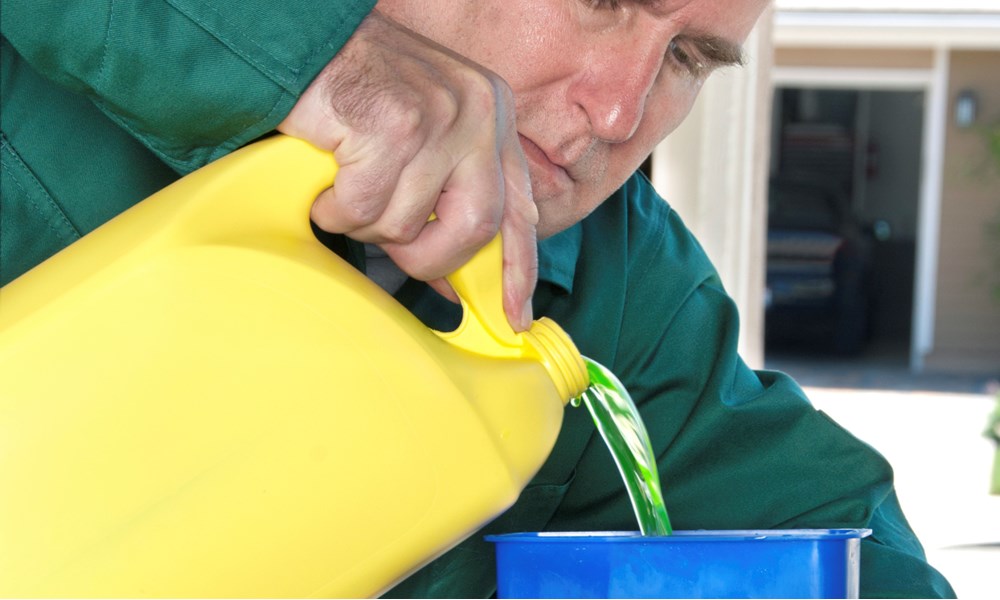
Your car’s engine produces a significant amount of heat during driving. This is why your car is fitted with a radiator system. Water flowing through the radiator system helps draw heat away from the engine and help it to stay cool. As the name suggests, the purpose of anti-freeze is to prevent the water in the radiator system from freezing. While this would not happen while the car is in motion, water in the radiator can easily freeze if the car is not in use. As water expands when frozen, this could cause serious damage.
Anti-freeze also has other benefits. It will maintain the optimum boiling point for the water in the system as well as preventing the build-up of rust in the system. It also reduces the amount of water lost through evaporation, reducing the need to keep topping up the system. Anti-freeze should normally be added to water in the cooling system on the basis of a 50/50 mix.
Anti-freeze or coolant should normally only need to be changed two or three times a year, as the amount of fluid lost from the system should be kept to a minimum. As part of your regular auto maintenance schedule, you should regularly check the amount of fluid in the system to ensure that you quickly identify whether the fluid level is dropping too quickly. If it is, there could be a more serious problem and you should seek the advice of the servicing department at your local dealership.
There are various brands of coolant or anti-freeze on the market. Try to avoid cheap brands, which may not be effective and may contain chemicals that can damage the cooling system. Ideally, you should use the brand recommended by your manufacturer. Check with the servicing department to get the details.
You should only ever check or change the coolant when the car engine is cool, normally when the car has not been used for several hours. Unscrewing the cap to a radiator or cooling tank when the engine is hot can be very dangerous as hot steam can easily burn your face or hand when released.
Open the hood and find the coolant reservoir container. This should be easy to find and will normally comprise a plastic tank with a screw-top lip. To be sure that you have the right part, check that the tank is connected to the radiator by a series of hoses. Lines on the top of the hoses indicate whether the coolant needs topping up or not.
Mix up the anti-freeze solution in a plastic jug before pouring into the tank. Remember that it should be 50/50 coolant and water. Some cars do not have a reservoir tank and you will need to pour the solution straight into the radiator. You should be able to check the fill level by looking directly into the tank. A funnel can help you pour the solution in more easily. Make sure that in either case the screw lid is fastened tightly after use.
Remember that anti-freeze contains toxic chemicals and should be handled with care. Wear gloves when using or wash your hands thoroughly after use. Clean up any spillages and dispose of empty bottles and containers safely.
